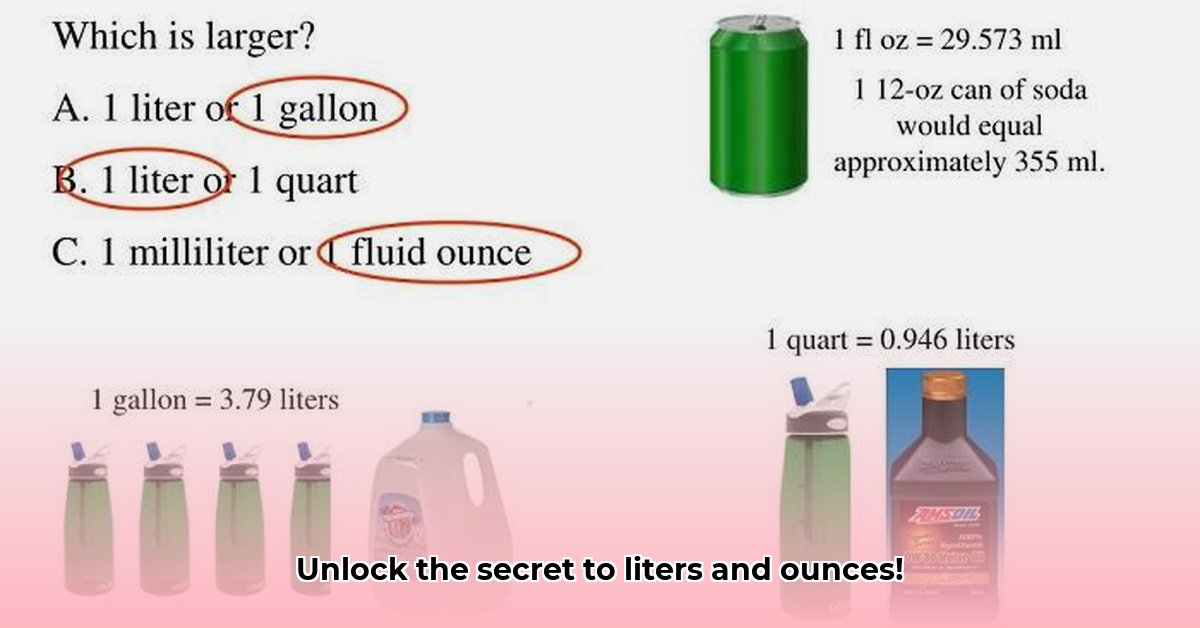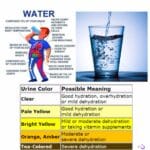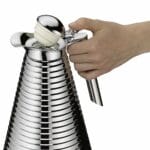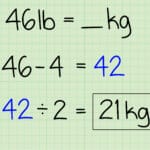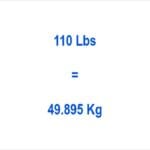Mastering the Liter-to-Fluid Ounce Conversion
Do you find yourself struggling with recipes from overseas, baffled by the difference between liters and ounces? This comprehensive guide demystifies the conversion process, equipping you with the knowledge to confidently tackle any recipe or measurement challenge. Whether you’re a seasoned chef, a home baker, or simply curious about unit conversions, this guide provides everything you need to know. Need to convert days to weeks? Check out this helpful days to weeks converter.
Understanding the Basics: Liters and Fluid Ounces
Before diving into the conversion, it’s crucial to grasp the fundamental units involved. A liter (L) is a standard unit of volume in the metric system, widely used globally for measuring liquids. On the other hand, a fluid ounce (fl oz) presents a slight complexity: it exists in two distinct forms – US and imperial (primarily used in the UK, Canada, and other Commonwealth countries). The imperial fluid ounce is slightly smaller than its US counterpart. This distinction is paramount, as using the wrong conversion factor can lead to inaccurate measurements and potentially disastrous results in precise applications. This guide focuses on the US fluid ounce, the standard in the United States.
The Conversion: Liters to US Fluid Ounces
The conversion factor from liters to US fluid ounces is approximately 33.8140227. This means that one liter is equivalent to roughly 33.814 US fluid ounces. While rounding to 33.814 is sufficient for most everyday scenarios like cooking and casual measurements, precision becomes critical in fields like pharmaceuticals, chemistry, and other scientific disciplines where even minor discrepancies can have significant consequences. In such cases, using the more precise conversion factor is essential.
How to Convert: A Step-by-Step Guide
Determine the Volume in Liters: Start by identifying the exact quantity in liters that needs conversion. If dealing with multiple containers, sum their individual volumes to obtain the total volume in liters.
Multiply by the Conversion Factor: Multiply the volume in liters by the conversion factor 33.8140227. For example, to convert 2.5 liters to fluid ounces: 2.5 L * 33.8140227 fl oz/L ≈ 84.535 fl oz. This multiplication proportionally scales the volume from liters to fluid ounces.
Round the Result (if necessary): For everyday purposes, rounding to one or two decimal places is usually sufficient. However, for scientific applications or when higher accuracy is required, retain more decimal places as appropriate. The level of precision needed depends on the specific application and its tolerance for error.
US vs. Imperial Fluid Ounces: A Critical Distinction
Remember, the 33.8140227 conversion factor applies only to US fluid ounces. Using it with imperial fluid ounces will yield inaccurate results. The imperial fluid ounce is slightly smaller, leading to a different conversion factor (approximately 35.195). Always double-check which system you’re working with, especially when using international recipes or dealing with measurements from different regions.
Practical Applications and Considerations
Understanding the liter-to-fluid ounce conversion proves invaluable across various domains:
Culinary Arts: Whether you’re a professional chef or a home cook experimenting with global cuisines, accurately converting between liters and fluid ounces is essential for following recipes and achieving consistent results.
Scientific Research: In scientific experiments, precise measurements are paramount for reproducibility and ensuring the validity of findings. Accurate conversions play a crucial role in maintaining the integrity of scientific processes.
Industrial Processes: Many industries, particularly those involving fluids, utilize both metric and imperial units. Precise conversions are vital for quality control, process optimization, and preventing costly errors.
Healthcare and Pharmaceuticals: Dosage accuracy is critical in healthcare. Proper conversion between units ensures that medications are administered safely and effectively.
Beyond the Basics: Tips and Tools for Accuracy
While online converters offer a quick and convenient way to perform conversions, it’s always prudent to double-check the results, especially for critical applications. Manual calculations or using a reliable calculator can help verify the accuracy of online tools. For highly precise measurements, investing in high-quality measuring equipment, such as graduated cylinders and calibrated scales, is highly recommended. These tools minimize measurement errors and ensure the highest level of accuracy in various applications.
By mastering the liter-to-fluid ounce conversion and understanding its nuances, you’ll gain confidence in handling various measurement scenarios, from everyday cooking to scientific endeavors. This knowledge empowers you to navigate different unit systems with ease and precision.
- Red Cloud, NE: Discover Willa Cather’s Legacy - April 11, 2025
- Remember Old Social Media Sites? Their Rise and Fall - April 11, 2025
- How many days till Feb 3?Accurate Countdowns & Tools - April 11, 2025
